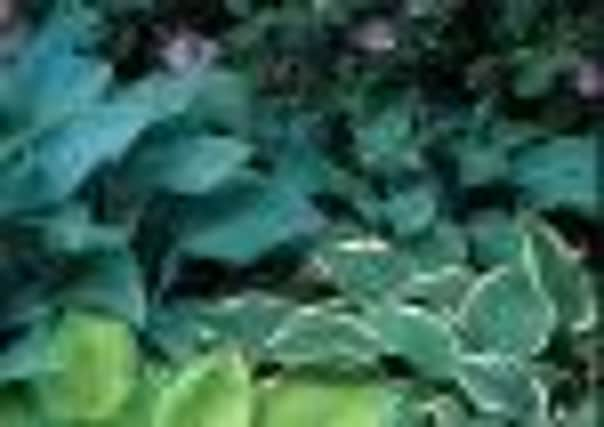Turning over a new leaf


As well as being great in shade, the wonderful leafy growth also comes at a time when spring bulbs are dying back.
Partner the two and mask the over-blown remains of the bulbs with fabulous new foliage. But hostas are so much more than simply problem-solvers; they’re also great in a woodland garden, as well as in borders and beds.
Advertisement
Hide AdAdvertisement
Hide AdThey’re also effective in combination with plants with Japanese heritage, including the smaller maples, bamboos, hydrangeas or ferns.
Leaves in dense mounds is what hostas do best, and depending on variety, they could be yellow, green, grey-blue or variegated.
The pattern and range of variegation, along with the range of colour, brings interest and colour to mixed borders or beds.
Leaves can also be heart-shaped, or ovate. Most also produce flowers, mainly in summer.
Advertisement
Hide AdAdvertisement
Hide AdThere’s a terrific range from which to choose. Look out for ‘Wide Brim’. This produces wonderful dark green leaves that have a wide margin of pale cream. It reaches a height of about 45cm and a spread of 1m.
The leaves of Hosta fortunei appear early enough to combine well with late spring flowers like bluebells. Many variants are available. ‘Shade Fanfare’ produces large, bright yellow-green leaves with creamy white edges and reaches a height and spread of 45cm and 60cm respectively. ‘Halcyon’ is a great choice if you’re looking for blue-green or glaucous foliage.
Hostas are a clump-forming plant which really helps if you want to populate an area. If you dig up established clumps, it’s possible to split them and replant the resulting halves. They’ll do well under deep-rooting trees and are perfect near water. As perennials, they die back completely in winter, the new spear-like shoots of the tightly rolled leaves appearing in spring.
Most hostas are fully hardy. They need a reasonably fertile, moist but well-drained soil. It’s important to stop them drying out, but spreading compost over the surface (mulching) in spring should do the trick.
Their succulent leaves can prove too much of a temptation to slugs, but growing in pots helps keep the leaves out of harm’s way.